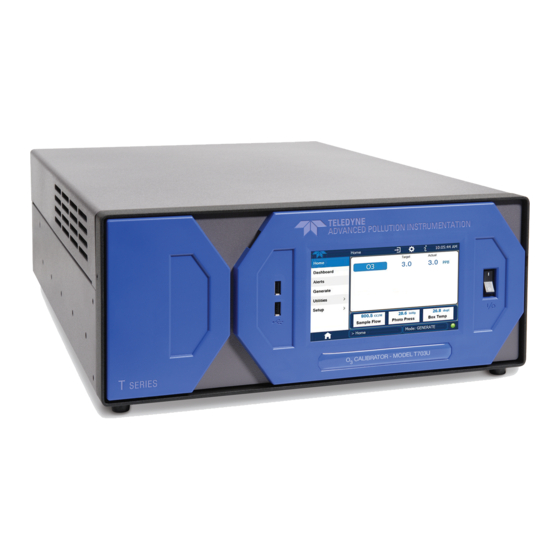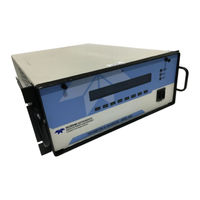
Teledyne T703 Manuals
Manuals and User Guides for Teledyne T703. We have 2 Teledyne T703 manuals available for free PDF download: Operation Manual, Training Manual
Teledyne T703 Operation Manual (241 pages)
PHOTOMETRIC O3 CALIBRATOR
Brand: Teledyne
|
Category: Test Equipment
|
Size: 6 MB
Table of Contents
Advertisement
Teledyne T703 Training Manual (96 pages)
PHOTOMETRIC OZONE CALIBRATOR
Brand: Teledyne
|
Category: Test Equipment
|
Size: 3 MB
Table of Contents
Advertisement

